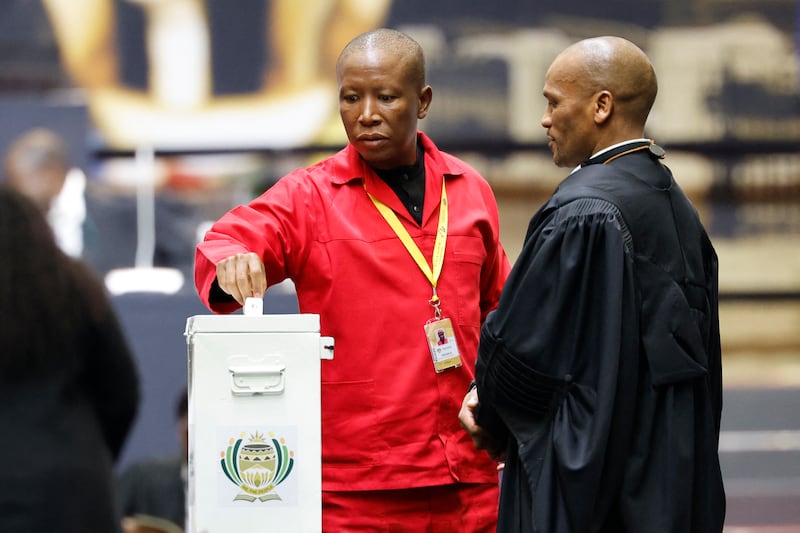Cyril Ramaphosa was reelected as South Africa’s president, hours after his African National Congress agreed a powersharing deal with business-friendly opposition parties.
Ramaphosa won 283 of the votes cast by members of National Assembly on Friday night, and Economic Freedom Fighters leader Julius Malema 44. Parties including the Democratic Alliance and Inkatha Freedom Party supported the incumbent’s candidacy for another five-year term, and in exchange will be allocated cabinet posts and key positions in the legislature.
“This is a historic juncture in the life of our country, which requires that we must work and act together to entrench our constitutional democracy and the rule of law, and build a South Africa for all of its people,” Ramaphosa said after his election in Cape Town. “It is with this in mind that I declare that I accept the mission you are giving me.”
Support for the ANC fell dramatically in the 2024 national poll, with the party winning just over 40 per cent of the vote, compared with the 57.5 per cent it won five years earlier. This gave it 159 seats in the 400-member lower house, meaning it needed opposition support to ensure Mr Ramaphosa’s election.
READ MORE
South Africans do not directly elect their president. Instead, the political parties they elect to represent them in parliament deploy MPs to the lower house. These MPs vote on the candidates they nominate for the government’s top job when the new parliament first opens.
After internal discussions that followed the release of election results, the ANC invited all parties in parliament to join it in a government of national unity, which led to two weeks of intense behind-the-scenes negotiations between the different political groups.

The uMkhonto weSizwe (MK) party and the Economic Freedom Fighters – both led by former ANC leaders who fell out with Mr Ramaphosa – and some smaller parties refused to partner with the ANC.
An alliance between the ANC and DA – the latter won 21.81 per cent of the vote on May 29th – was by no means a forgone conclusion. They have significant ideological differences around policy areas, even though both are centrist parties that see South Africa’s constitution as a cornerstone of its democracy.
Despite this, the former political adversaries and several other parties were able to find enough common ground to form a broad alliance.
The alliance marks the dawn of a new era of national-level coalition politics for South Africans, as until last month the former liberation movement has won a parliamentary majority in every general election since the end of apartheid in 1994.
But DA leader John Steenhuisen said the most recent national ballot showed that South Africans no longer wanted “any one party to dominate our society” and that “the time for a new politics of collaboration” had arrived.
“We are committed to contributing in any and all ways we can to rescue South Africa from the path of decline, and to ensure that this new chapter is the best one yet for our nation,” he said after signing the coalition agreement.
According to the DA the deal will see it get leadership roles in Mr Ramaphosa’s cabinet, the National Assembly and the hung provincial governments in Gauteng and KwaZulu-Natal provinces, in return for its support.
In addition, the framework document details the executive’s decision-making process, a conflict-breaking mechanism and provides guidelines for policymaking and the finalisation of the national budget.
- Sign up for push alerts and have the best news, analysis and comment delivered directly to your phone
- Join The Irish Times on WhatsApp and stay up to date
- Listen to our Inside Politics podcast for the best political chat and analysis
















